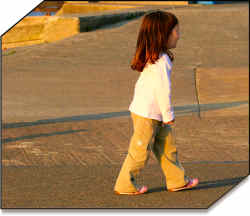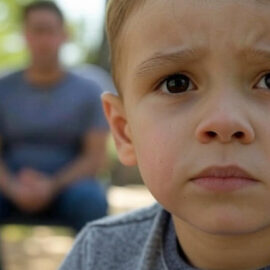 The National Runaway Switchboard reports that between 1.6 and 2.8 million youth run away each year. It also reports that there has been “a significant increase in the number of crisis calls identifying abuse or neglect as a reason for the call, with abuse calls up 33 percent and neglect calls up 54 percent between 2005-2008″ (National Runaway Switchboard Crisis Caller Trends, 2009, p. 2).
The National Runaway Switchboard reports that between 1.6 and 2.8 million youth run away each year. It also reports that there has been “a significant increase in the number of crisis calls identifying abuse or neglect as a reason for the call, with abuse calls up 33 percent and neglect calls up 54 percent between 2005-2008″ (National Runaway Switchboard Crisis Caller Trends, 2009, p. 2).
Youth in out-of-home care often choose conduct that does not ensure their own safety. They elope from foster homes, group homes, or other residential settings at an unknown rate. When children are known risks for eloping a court may find that it is the legal duty of the caregiver to take all prudent means to take appropriate preventative measures.
Instinctively, we are aware of the links between youths running away in general and youths eloping from out-of-home care. Social science research has made significant progress in describing runaway youth in general (Martinez, 2006; Sanchez, Waller, & Greene, 2006), but has made minimal inroads in accurately describing the phenomenon of youth eloping from out-of-home care. Similarly, while federal laws and conventions exist to address runaways and missing children, scant legislative attention has been paid to youth eloping from out-of-home care.
Because of this relative dearth of data there exists no consensus concerning fundamental definitions regarding this population. For purposes of this article, a working definition of “elopement” is any unauthorized absence from within or outside of a youth’s assigned location: i.e., when a youth can not be accounted for or when there is reasonable suspicion to believe the youth has absconded. Such situations include, but are not limited to, failing to return at a designated time from an approved leave or the unauthorized departure from a foster home or facility.
Between the time of elopement and the time a youth returns or is apprehended, their safety is in jeopardy. Should harm befall the youth, liability against the agency may result under a negligence theory. The four essential elements of negligence are:
- The defendant had a duty to the plaintiff.
- The defendant failed to perform that duty.
- As a result of the defendant’s violation of that duty, the plaintiff was injured.
- The plaintiff suffered damage as a proximate result of the breach of the defendant’s duty.
If a court determines that a facility neglected a vulnerable child by failing to adopt reasonable preventative measures, liability may attach. Of course, constitutional due process will not require that an agency’s elopement policies be drafted to address every conceivable elopement scenario. That is to say, an agency is likely not going to be subject to a strict liability standard; i.e., legal responsibility for an injury that can be imposed on the defendant without proof of carelessness or fault. Rather, courts are most apt to use a reasonableness standard, requiring that agencies make reasonable efforts to properly supervise its residents. It follows that a defendant caregiver that assumes responsibility for a vulnerable child should know the general capacities of that child and should exercise care to prevent foreseeable harm to the child.
Examples of preventative measures that caregivers may be expected to take include:
- Adequate supervision, monitoring, and record keeping;
- Hiring and training staff in accordance with the minimum requirements established by state law and the agency’s own policies;
- The existence of or sufficiency of an elopement prevention policy, especially if there is evidence indicating that there had been previous elopements (whether or not they resulted in harm);
- The need to properly assess a youth for elopement;
- The use of available and reasonable technology (alarms, GPS transponder technology);
- The need to adequately respond once a youth has eloped.
As the licensor of many out-of-home facilities from which children elope, departments of human services may want to further investigate their own responsibilities and potential liability in this area.
 Daniel Pollack is a professor at Yeshiva University’s School of Social Work in New York City and a frequent expert witness in child welfare lawsuits. Click here to read his biography. Dr. Pollack can be reached at dpollack@yu.edu
Daniel Pollack is a professor at Yeshiva University’s School of Social Work in New York City and a frequent expert witness in child welfare lawsuits. Click here to read his biography. Dr. Pollack can be reached at dpollack@yu.edu
Reprinted by permission of the author. This article was originally published in Policy & Practice, December 2010, 68(6), 13.
© 2011, Ohio Family Law Blog. All rights reserved.
Daniel Pollack, MSW, Esq. is professor at Yeshiva University’s School of Social Work and a frequent expert witness in child welfare lawsuits. Contact: Email: dpollack@yu.edu Ph: 212-960-0836.


